Welcome to the PS5 Beginner’s Guide to Remnant 2. Whether you’re a seasoned gamer or just starting your journey into the world of Remnant. Remnant 2 is a thrilling and immersive action RPG that immerses players in a post-apocalyptic world filled with dangerous creatures, enigmatic mysteries, and exciting challenges.

This guide is primarily aimed at beginners, but it can also serve as a valuable reference for those looking to refresh their knowledge or dive deeper into the game mechanics. If you are new to Remnant Two or the action RPG genre, you’ll find valuable information and tips here to help you navigate this captivating world with confidence.
We will provide you with an overview of what to expect from this guide and why it’s an essential companion for those embarking on their adventures in Remnant 2.
Get Ready to Step into The World of Remnant 2
Before you embark on your journey in the world of the Remnant 2 game, it’s crucial to ensure that you have everything set up correctly and understand the basic steps to begin your adventure.
System Requirements
Understanding the system requirements for Remnant 2 is the first step to ensuring your gaming experience is smooth and enjoyable. Before you install the game, make sure your computer or gaming console meets the necessary specifications. These requirements may vary depending on your platform, so be sure to check the official Remnant 2 website or documentation for specific details.
Installing the Game
Once you’ve confirmed that your system meets the requirements, it’s time to install Remnant 2. The installation process will differ based on your platform (PC, Xbox, PlayStation, etc.). Follow the official installation instructions provided by the game’s developers to ensure a successful setup.
Creating a Character

In Remnant 2, you’ll start your adventure by creating a character. This character will be your avatar throughout the game, and you can customize their appearance, name, and starting attributes. The character creation process allows for a certain degree of personalization, so take your time to craft a character that suits your preferences.
Choosing a Difficulty Level
Remnant 2 offers different difficulty levels, catering to various player preferences. Before you begin your adventure, decide on the level of challenge you’re comfortable with. If you’re new to the game or action RPGs in general, consider starting on an easier difficulty setting. You can always adjust the difficulty as you become more familiar with the game mechanics.
- Easy – This setting is ideal for players who are new to action RPGs or prefer a more relaxed gaming experience.
- Normal – This offers a balanced level of challenge for players with some experience in the genre.
- Hard – If you’re seeking a more demanding experience and are comfortable with the game’s mechanics, this setting is for you.
- Nightmare – Reserved for the most skilled and daring players, this setting offers an intense and challenging adventure.
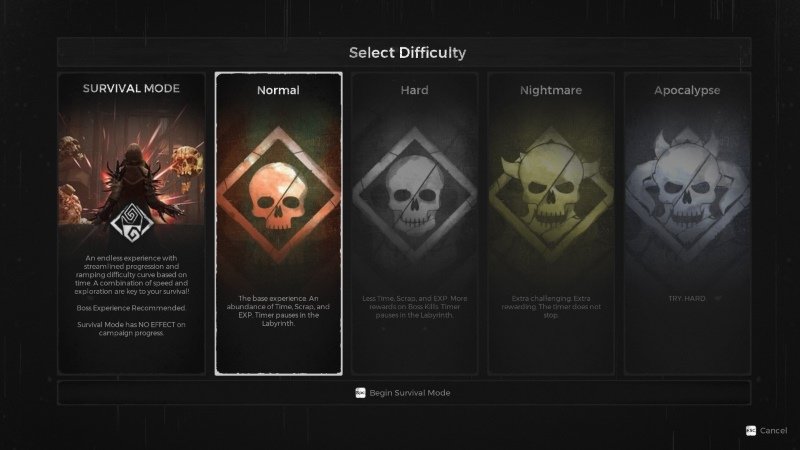
Choose a difficulty level that suits your skill level and desired level of challenge. Remember that you can change the difficulty at any time during your playthrough, so don’t hesitate to adjust it based on your progress and comfort.
Different Controls and Interfaces That Will Help You to Grasp Movement
Understanding the controls and interface of the Remnant 2 game is essential for navigating the game world and engaging in battles effectively.
Keyboard and Mouse Controls
If you’re playing Remnant Two on a PC, the keyboard and mouse controls are your primary input method. Familiarize yourself with these controls to ensure a smooth gaming experience:
- W, A, S, D – These keys control your character’s movement. Use ‘W’ to move forward, ‘A’ to strafe left, ‘S’ to move backward, and ‘D’ to strafe right.
- Mouse – The mouse controls your character’s aim. Moving the mouse adjusts your view and crosshair.
- Left Mouse Button – The primary attack button. Click to use your equipped weapon.
- Right Mouse Button – The secondary attack or aim-down-sights button. Use it to zoom in with certain weapons or perform secondary attacks.
- Spacebar – Jump. Use this to traverse obstacles and evade attacks.
- Shift – Sprint. Hold this key to move faster.
- Ctrl – Crouch or Dodge. Useful for avoiding enemy fire and obstacles.
Remember that you can customize these controls in the game settings to suit your preferences better.
Gamepad Controls
If you’re playing on a console like Xbox or PlayStation, you’ll be using a gamepad. Familiarize yourself with the gamepad controls for Remnant 2. These controls are typically standardized for most console platforms:
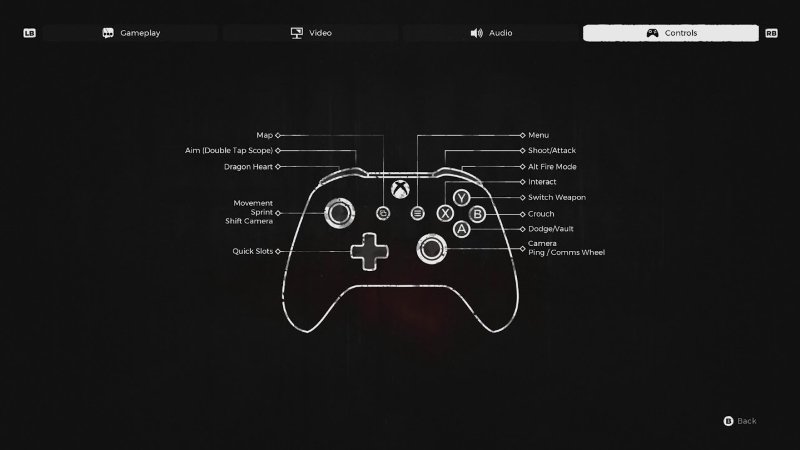
- Left Stick – Controls character movement.
- Right Stick – Adjusts your aim and camera view.
- A Button – Primary attack. Use it to fire your equipped weapon.
- Right Trigger – Secondary attack or aim-down-sights (ADS).
- Button – Jump.
- Left Trigger – Crouch or Dodge.
- X Button – Interact.
- Y Button – Reload.
- LB and RB (L1 and R1 on PlayStation) – Cycle between equipped weapons or abilities.
User Interface Elements and Main Game HUD
The user interface (UI) of Remnant 2 provides essential information to help you understand your character’s status, gear, and the game world. Here are some common UI elements:
- Health Bar – Typically located at the top left, this bar shows your character’s current health.
- Stamina Bar – Located near the health bar, this shows your character’s stamina, which is used for sprinting and certain actions.
- Ammo Count – This displays your remaining ammunition for your equipped weapon.
- Status Effects – Icons or text indicating any status effects, such as bleeding or burning, that are affecting your character.
- Mini-Map – Located in the corner of the screen, it helps you navigate and identify nearby points of interest.
- Objective Marker – An indicator pointing to your current objective or quest target.
- Inventory and Gear – Accessible through the inventory screen (usually ‘Tab’ on PC), this is where you manage your equipment, weapons, and consumables.
Understanding these controls and interface elements is vital for a successful journey in Remnant 2.
Gameplay Basics of Remnant 2 and World Exploring
Understanding the fundamental aspects of gameplay in Remnant 2 is crucial for your survival and success in the post-apocalyptic world.
Exploring the Game World
Exploring the world of Remnant two
- Open World Exploration – Remnant 2 features an expansive open world filled with diverse environments, hidden secrets, and deadly adversaries. Take your time to explore, as uncovering hidden areas often leads to valuable loot and additional lore.
- Interactive Environment – Many objects in the environment can be interacted with. You can find items, lore snippets, and even shortcuts that can aid your progress.
- Check Every Nook and Cranny – Keep a keen eye out for hidden items and treasure chests. Often, the best gear and resources are tucked away in out-of-the-way locations.
Combat Mechanics
Here is the basic of combat in the Remnant 2 game
- Weapon Variety – Remnant 2 offers a wide range of weapons, from firearms to melee weapons and unique tools. Each weapon has its strengths and weaknesses, allowing for diverse combat strategies.
- Reload and Ammo Management – Pay attention to your ammunition and reload when necessary. Running out of bullets in the middle of a firefight can be deadly.
- Cover and Evasion – Effective use of cover is essential. Learn to take cover to avoid enemy fire and regenerate health and stamina.
- Dodge and Roll – Use dodging and rolling to evade attacks. Mastering these movements is key to survival.
- Status Effects – Be aware of status effects. Some weapons or enemies can inflict bleeding, burning, or other conditions. Use consumables or abilities to mitigate these effects.
Character Progression
Here is how you can progress in the game
- Experience Points (XP) – As you defeat enemies and complete quests, you earn experience points. Accumulating XP allows your character to level up and gain skill points.
- Attributes – Invest skill points in attributes such as Strength, Vigor, and Spirit to improve your character’s capabilities. These attributes affect your health, stamina, damage output, and more.
- Traits and Perks – Traits are passive abilities that provide unique benefits. Perks are active abilities that can be equipped to enhance your combat or utility skills.
- Modifications – Many weapons and armor can be modified to suit your playstyle. Experiment with different modifications to find what works best for you.
Inventory Management
Manage your inventory like a pro.
- Inventory Space – Manage your inventory wisely, as space is limited. Sell or dismantle unwanted items to free up inventory slots.
- Healing Items – Keep a stock of healing items, such as health packs or bloodworts, to ensure you can recover quickly in dire situations.
- Ammunition – Ensure you have sufficient ammunition for your preferred weapons before heading into battles.
- Lore and Collectibles – Collect lore snippets and read them to deepen your understanding of the game’s story and lore.
How to Build Your Character in a Game?
Character development is a fundamental aspect of Remnant 2, allowing you to customize your character’s abilities and playstyle to suit your preferences with the best build in Remnant 2.
Character Classes and Archetypes
Remnant 2 doesn’t have traditional character classes, but it does have archetypes that give you a starting point for your character’s development. These archetypes help shape your character’s initial attributes and equipment, but they don’t lock you into a specific playstyle. You can always adjust and customize your character as you progress in the game.
- Hunter – This archetype emphasizes precision and long-range combat. If you prefer sniper rifles and dealing damage from a distance, the Hunter is a suitable choice.
- Scrapper – Scrappers excel in close-quarters combat. They favor shotguns and melee weapons, making them the perfect choice for those who like to get up close and personal with enemies.
- Ex-Cultist – This archetype focuses on support and control. Ex-cultists can summon turrets and use mod power effectively, making them valuable team players.
Attributes and Statistics of the Player
Attributes play a vital role in character development, determining your character’s base statistics and overall effectiveness in combat. These attributes can be modified as you level up and invest skill points.
- Vigor – Boosts your health, making you more durable in battle.
- Endurance – Increases your stamina, allowing for more actions like sprinting and dodging.
- Strength – Improves your melee damage, making you deadlier in close combat.
- Cognition – Enhances your ranged damage, making you more effective with firearms.
- Spirit – Amplifies mod power, allowing you to use special abilities and weapon mods more frequently.
- Luck – Affects your critical hit chance and increases the chances of finding valuable loot.
Traits and Perks to Boost Your Gameplay
Traits are passive abilities that provide unique advantages to your character. As you progress, you’ll unlock and enhance traits to cater to your specific playstyle. These traits can boost your damage resistance or provide other unique benefits.
Perks, on the other hand, are active abilities that can be equipped to enhance your combat and utility skills. You’ll find and unlock various perks throughout your journey, allowing you to fine-tune your character’s capabilities.
Leveling Up and Skill Points
Earning experience points (XP) by defeating enemies and completing quests will allow your character to level up. Leveling up grants skill points, which you can invest in your character’s attributes and unlock new traits and perks.
- Attributes – Spend skill points to increase your character’s attributes like Vigor, Endurance, Strength, Cognition, Spirit, and Luck.
- Traits – Unlock and enhance traits to bolster your character’s passive abilities and advantages.
- Perks – Equip perks that suit your playstyle. You can swap perks in and out as needed, so feel free to experiment.
Character development is an ongoing process in Remnant 2. As you continue to explore the game world, defeat enemies, and complete quests, you’ll gain new abilities, grow stronger, and tailor your character to your liking. The choices you make in character development will significantly impact your success in this challenging post-apocalyptic adventure.
Weapons and Equipment That You Will be Using in Remnant 2
In Remnant 2, your choice of weapons and equipment is paramount to your survival and effectiveness in the post-apocalyptic world
Weapon Types Available in Game
Remnant 2 offers a diverse range of weapons, each with its unique characteristics and combat styles. Understanding these weapon types is essential for tailoring your gameplay experience:
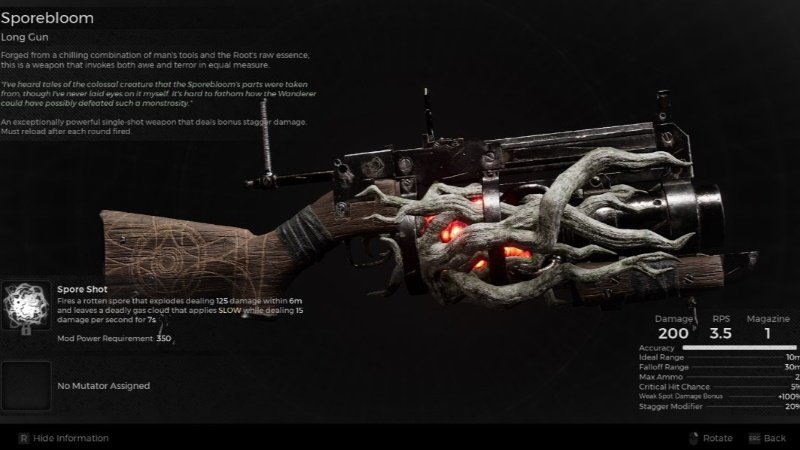
- Firearms – Ranged weapons include pistols, shotguns, assault rifles, and sniper rifles. Each firearm has distinct attributes, such as range, rate of fire, and damage output.
- Melee Weapons – These include swords, hammers, and other close-combat options. Melee weapons can be potent and are especially effective in close-quarters combat.
- Special Weapons – Certain weapons come with built-in mods or unique abilities. These can provide a variety of effects, from summoning turrets to launching explosive projectiles.
Armor and Equipment to Make Your Character Strong
Your character’s armor provides protection and can also have set bonuses. Equipping a complete set of matching armor can grant additional benefits, such as increased damage resistance or unique abilities.
- Amulets and Rings – These accessories offer various bonuses, such as increased critical hit chance, faster healing, or improved mod power.
- Trinkets – Trinkets provide additional passive effects and can further tailor your character’s strengths and weaknesses to your preferred playstyle.
Upgrading and Customizing Your Gear
To maximize the effectiveness of your weapons and equipment, consider the following:
- Upgrade Materials – As you progress, you’ll gather materials that can be used to enhance your gear. Use these materials judiciously to improve the stats and effectiveness of your weapons and armor.
- Weapon Mods – Many firearms feature mod slots where you can equip special abilities. Experiment with different mods to discover combinations that complement your playstyle.
- Armor Traits – Your armor can possess traits that offer unique advantages. Pay attention to these traits and select armor that aligns with your character’s strengths and weaknesses.
- Elemental Damage – Some weapons deal elemental damage, such as fire or radiation. Understanding which elements are effective against specific enemy types can be advantageous.
Ammo and Consumables to Use During Combat
Monitor your ammunition closely. Running out of bullets during a heated battle can leave you vulnerable. Carrying multiple weapons with different ammo types can be a strategic choice.
- Healing Items – Maintain a supply of healing items, including health packs or consumables that can swiftly restore your health in dire situations.
- Status-Effect Remedies – Certain consumables can cleanse status effects, such as bleeding or burning. Keep these on hand for emergencies.
- Buff Items – Items that provide temporary bonuses, such as increased damage or resistance, can be instrumental in challenging encounters.
Understanding the diverse array of weapons and equipment in Remnant 2 and knowing how to modify and employ them effectively is crucial for your success. The choices you make regarding your gear and how you customize it will significantly impact your combat capabilities and your ability to navigate the difficult world that awaits you.
Types of Enemies That You Will Encounter Throughout Your Journey
In Remnant 2, the post-apocalyptic world is teeming with formidable and often unpredictable adversaries. Understanding how to approach enemy encounters is crucial for your survival.
Scavengers
These human foes are often found in the game, wielding various firearms and taking cover strategically. They require precision and tactical combat to defeat.
Creatures
A wide array of mutated creatures inhabits the post-apocalyptic world. These include everything from fast, agile melee attackers to ranged spitters and lumbering tank-like foes. Understanding their attack patterns and weaknesses is vital.
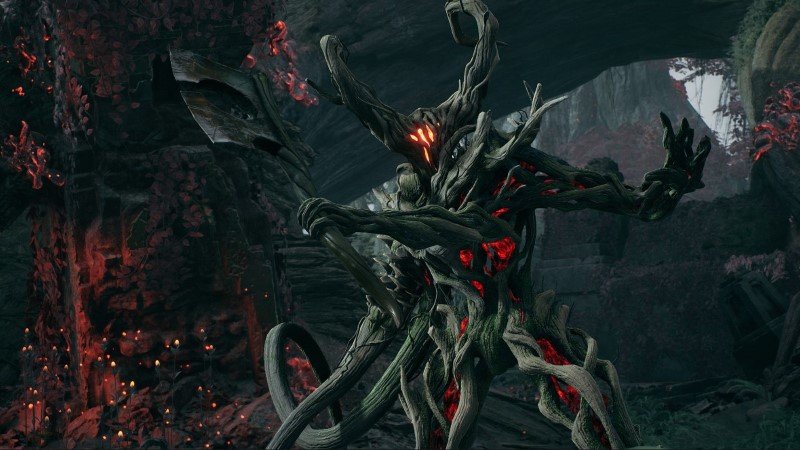
Mini-Bosses
Along your journey, you’ll encounter formidable mini-bosses. These enemies are tougher than standard foes and often have unique abilities. Study their attack patterns and consider using your character’s traits and equipment to your advantage.
Boss Battles – How You Can Win Them?
Boss battles are significant challenges that await you in Remnant 2. These battles typically require careful preparation and strategic thinking. Here are some tips for taking on boss encounters:
- Study Patterns – Pay close attention to the boss’s attack patterns and movements. Learning their behavior can help you anticipate and dodge their attacks effectively.
- Positioning – Position yourself strategically, staying out of the boss’s reach while being ready to exploit openings for attacks.
- Use Cover – Many boss arenas feature cover and obstacles. Utilize these for protection and to break the line of sight of ranged attackers.
- Adapt Your Loadout – Depending on the boss’s weaknesses, consider modifying your weapon and equipment loadout to maximize your damage output.
- Teamwork (Co-op) – If you’re playing in co-op mode, communicate with your teammates and coordinate your attacks to overcome the boss’s formidable defenses.
- Patience – Boss battles can be long and challenging. Maintain your patience and focus, avoiding reckless actions that could lead to your demise.
Combat Strategies and Tactics
In standard encounters and boss battles, employing effective combat strategies can make a significant difference:
- Aim for Weak Spots – Many enemies and bosses have weak spots. Targeting these areas can deal extra damage and help you defeat them more swiftly.
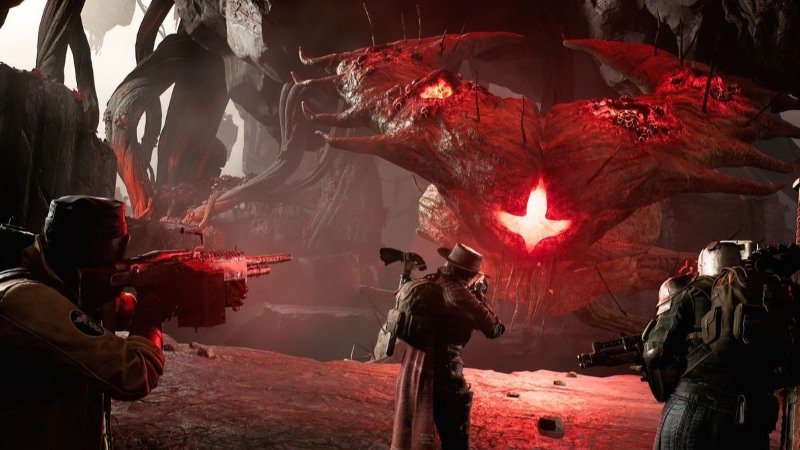
- Use Cover – Take advantage of cover to protect yourself from enemy fire. Move strategically between cover points to avoid getting surrounded.
- Dodge and Evade – Master the art of dodging and evading attacks. Timely rolls and dodges can save you from taking damage.
- Stagger and Crowd Control – Some weapons and abilities can stagger enemies or control crowds. Use this to your advantage, creating openings to attack or heal.
- Status Effects – Certain weapons and mods can inflict status effects on enemies. These effects can weaken or hinder foes, making them easier to defeat.
- Silent Approaches – In some scenarios, sneaking and taking a stealthy approach can help you take out enemies quietly without alerting others.
Understanding how to handle enemy encounters, whether they’re common foes or powerful bosses, is an essential skill in Remnant 2. As you progress in the game, you’ll gain valuable experience that will aid you in tackling increasingly challenging adversaries and uncovering the mysteries of the post-apocalyptic world.
Conclusion
Armed with the knowledge from our Beginner’s Guide to Remnant 2, you’re now prepared to navigate the post-apocalyptic world with skill and confidence. Survive, thrive, and conquer the challenges that await in this gripping adventure, making your mark in this harsh, unforgiving landscape.
Additional Reading: Cyberpunk 2077: Exploring the World with Must-Visit Locations

0 Comments